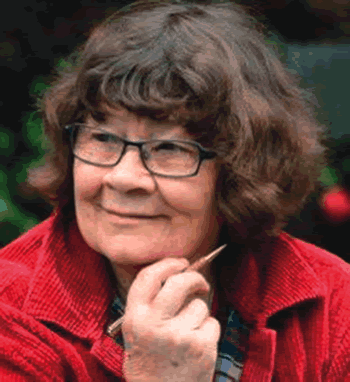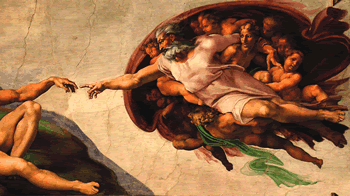The Gap

Joy Cowley
In 1977, work began on the ceiling of the Sistine chapel to remove 500 years of incense and candle smoke from Michelangelo's paintings. When the chapel was opened again in 1989, not everyone was happy with the result. The colours were so bright some people saw them as gaudy, and believed Michelangelo's masterpiece had been repainted.
It's interesting how we can become used to the old and soiled. I suspect there is a parable somewhere in that.
If we visit the Sistine chapel today, we'll see a ceiling of vivid scripture as Michelangelo painted it. With hundreds of other visitors, we'll walk with heads upturned in awe.
There is one place where everyone stops. It's under the picture of The Creation of Adam.
God is leaning towards Adam who appears to have fallen backwards, his arm extended as though he's trying to return to God. His finger is almost touching God's, but we get the feeling this won't happen. We notice that both Adam and God are strongly muscled, a reminder that Michelangelo was first and foremost a sculptor.
We stand still, gazing at the painting. There is much in the detail that is alive with expression. It claims our eyes and our hearts.
Why does this particular picture hold our attention? What did Michelangelo intend us to see?
Over the centuries there have been many theories about The Creation of Adam, people interpreting body language and background as they saw it. The cloak-like shape behind God, for example: does it represent an unfolding universe? Is it formed like a uterus to suggest the birthing of creation? Or does that shape resemble a brain and wisdom? All of these have been historical interpretations.
For some of us, though, the potent image is the gap between God's finger and Adam's finger. God is leaning forward as a father reaches for his child, but Adam is helpless and falling away.
We can see much pathos in that gap between the fingers. It is a space of loss and yearning, and we feel it deeply. It belongs to us, and no effort on our part is going to close it.
What then, fills the gap?
I believe Michelangelo tells us in another part of the painting. The answer is beneath God's left arm and hand. There is a young woman there, secure in the crook of God's elbow.
Tradition says this is Eve waiting to evolve from Adam's side, but if we look closely, we see the woman has the same face as that of Michelangelo's sculpture of The Pieta. The woman is Mary.
Further along, God's left hand rests on a baby. Both the woman and the baby are in subdued colour, suggesting they have not yet come into incarnation.
The artist is telling us who closes the gap between us and our Creator.
It is the Beloved. It is Christ Jesus.
This article appeared originally in CathNews NZ Pacific. It is re-printed with permission.
 Entries(RSS)
Entries(RSS)